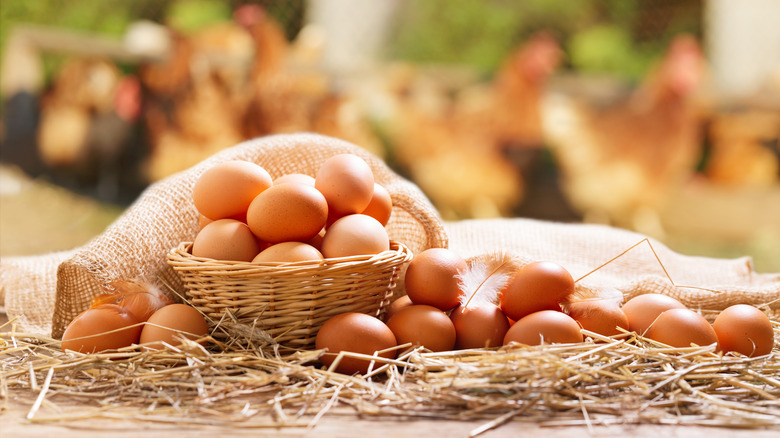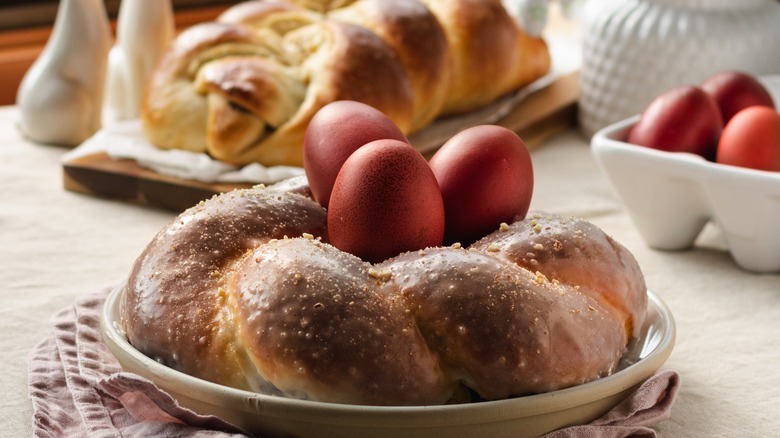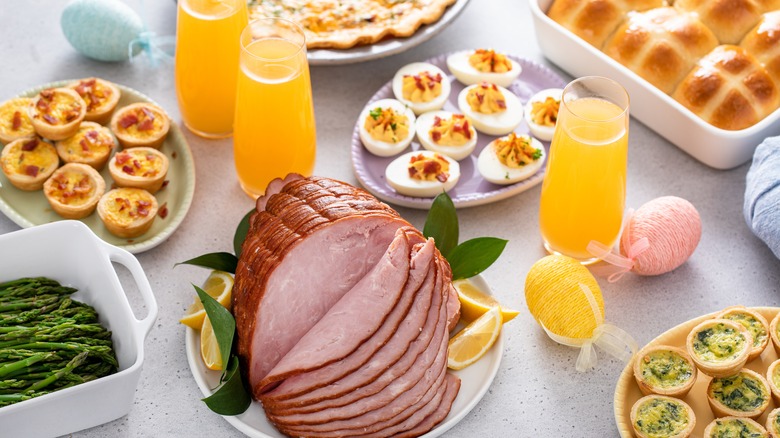Why Eggs Were Once Forbidden During Lent
Eggs have long been associated with springtime, renewal, fertility, and rebirth across many cultures, religions, and traditions. The symbolism of eggs was repurposed in the early years of Christianity to then symbolize the resurrection of Jesus. Over the centuries, decorated Easter eggs have since become a popular secular tradition as part of the Christian celebration of Easter. Eggs in some form are used in all sorts of decorations, crafts, games, and gifts.
So if eggs have been such a prevalent symbol at Easter for a very long time, why were they once a forbidden food during Lent? Traditionally, it was forbidden to eat meat and all animal products, including milk and eggs. This denial of more luxurious foods was meant as a symbolic abstinence to represent Jesus' 40-day fast. While many people still do not eat meat — excluding seafood — during some or all of Lent, eggs and milk do not typically make the list of forbidden foods anymore.
Fasting from eggs also had to do with creating abundance
Not being allowed to eat eggs during Lent also served a practical purpose. Hens would continue to lay throughout the Lenten season, and by the time the Easter celebrations came around, families would have accumulated a huge abundance of eggs. Eggs were even taken to churches on Holy Saturday to receive blessings before the Easter meal. Eggs were a particularly important part of the Easter feast for those who could not afford more expensive proteins.
Decorating eggs was a practice that could have come about because of how special eggs were considered to be during this important season. Sometimes red dye was used to represent joy — though there are also various legends about eggs being turned red by the blood of Christ. Though dyed Easter eggs can be found in any number of vibrant colors, red remains most common in traditional Easter celebrations.
Follow ancient traditions and eat eggs on Easter
These days, it is common to celebrate Easter with a big brunch meal, so eggs are a great option for tons of celebratory Easter dishes. Go the do-it-yourself route with a bagel bar loaded with all the fun fillings like cream cheese, capers, cucumbers, tomatoes, red onions, slices of smoked ham, and sliced hard-boiled eggs. Or, consider making centerpiece dishes that are easy to put together for a crowd, such as quiches, egg bakes, and frittatas, or even a bubbly pan of shakshuka — a North African dish of eggs cooked in tomato sauce.
If your family likes to decorate hard-boiled eggs for Easter, feel free to use them later in the day for recipes as long as you used food-safe dyes and stored them safely. Boiled eggs can safely stay out of the fridge for two hours at cool temperatures, according to the Food and Drug Administration. Use this simple restaurant trick to peel many hard-boiled eggs, and put them to good use in Scotch eggs, deviled eggs, egg salad, or Niçoise salad.



